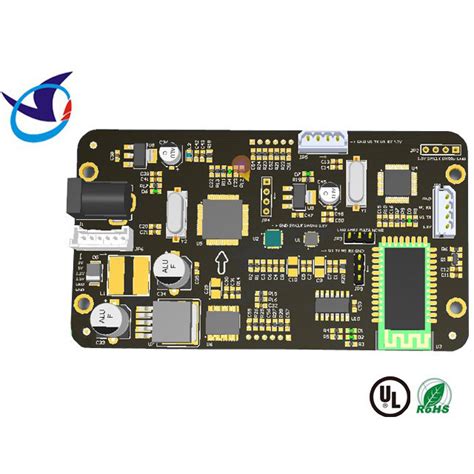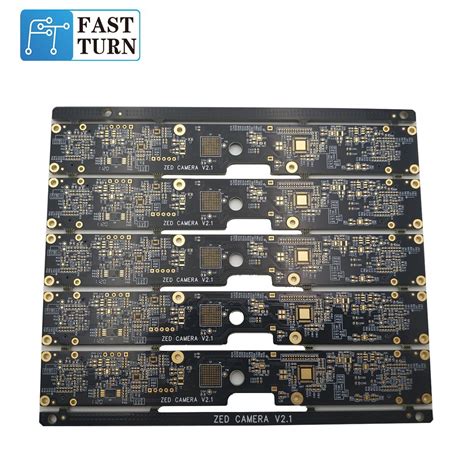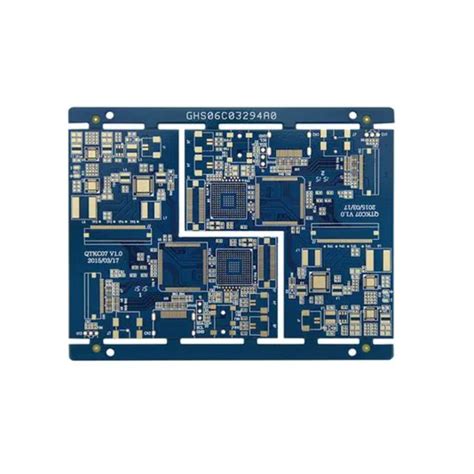What is a PCB-BOM?
A PCB-BOM, or Printed Circuit Board Bill of Materials, is a comprehensive list of all the components and materials required to manufacture a PCB. It serves as a crucial document for PCB designers, manufacturers, and procurement teams, ensuring that all necessary parts are accounted for and ordered correctly.
A typical PCB-BOM includes the following information:
| Component | Description | Quantity | Manufacturer | Part Number | Reference Designator |
|---|---|---|---|---|---|
| Resistor | 10kΩ, 0.25W | 10 | ABC Inc. | ABC-10K-025 | R1, R2, R5-R12 |
| Capacitor | 100nF, 50V | 5 | XYZ Corp. | XYZ-104-50 | C1-C5 |
| IC | MCU, 32-bit | 1 | Microchip | PIC32MX460F512L | U1 |
Benefits of a Well-Organized PCB-BOM
A well-organized and accurate PCB-BOM offers several benefits:
- Reduced Errors: A clear and concise BOM minimizes the chances of ordering incorrect components or quantities, saving time and money.
- Improved Communication: A standardized BOM format ensures that all stakeholders, from designers to manufacturers, have access to the same information, reducing miscommunication.
- Faster Procurement: An accurate BOM allows procurement teams to quickly order the necessary components, reducing lead times and ensuring timely project completion.
PCB-BOM Management Software
Managing a PCB-BOM can be a complex task, especially for larger projects with hundreds or thousands of components. This is where PCB-BOM management software comes into play.
Features of PCB-BOM Management Software
A good PCB-BOM management software should offer the following features:
- Integration with PCB Design Tools: The software should seamlessly integrate with popular PCB design tools, such as Altium Designer, OrCAD, or KiCad, allowing for easy import and export of BOM data.
- Component Database: A comprehensive component database with up-to-date information on part numbers, manufacturers, and specifications is essential for accurate BOM creation.
- Revision Control: The software should provide revision control features, allowing users to track changes and maintain a history of BOM updates.
- Collaborative Features: Cloud-based software with collaborative features enables team members to work on the same BOM simultaneously, improving efficiency and reducing errors.
Popular PCB-BOM Management Software
Some popular PCB-BOM management software options include:
- Altium Vault: A comprehensive solution for component management, BOM creation, and revision control, integrated with Altium Designer.
- OpenBOM: A cloud-based platform that offers BOM management, purchasing, and inventory control features, with integrations for various PCB design tools.
- Arena BOMControl: A cloud-based BOM management solution that offers real-time collaboration, change management, and integration with popular ERP and PLM systems.

Best Practices for PCB-BOM Creation
To ensure an accurate and efficient PCB-BOM, follow these best practices:
1. Standardize Component Naming
Establish a consistent naming convention for components to avoid confusion and duplication. Use a combination of the component type, value, and package to create unique identifiers, such as “RES-10K-0603” for a 10kΩ resistor in a 0603 package.
2. Include All Necessary Information
Ensure that your PCB-BOM includes all the required information for each component, such as:
- Part number
- Manufacturer
- Description
- Quantity
- Reference designator
- Footprint
- Value or rating
3. Use a Consistent File Format
Choose a standard file format for your PCB-BOM, such as CSV or Excel, to ensure compatibility with various software tools and ease of sharing among team members.
4. Validate and Review
Always validate and review your PCB-BOM before finalizing it. Cross-check the BOM against the schematic and PCB layout to ensure that all components are accounted for and that the quantities and reference designators are correct.
5. Maintain Version Control
Implement a version control system for your PCB-BOM to track changes and revisions. This helps maintain a clear history of updates and ensures that all team members are working with the most current version of the BOM.

Integrating PCB-BOM with Inventory Management
Integrating your PCB-BOM with an inventory management system offers several benefits, such as:
- Real-Time Inventory Tracking: Linking your BOM to your inventory system allows for real-time tracking of component stock levels, helping you avoid shortages and overstocking.
- Automated Reordering: With integrated inventory management, you can set up automatic reordering of components when stock levels fall below a predefined threshold, ensuring a continuous supply of parts.
- Cost Optimization: By monitoring component prices and lead times through your inventory management system, you can make informed decisions on when to order parts, potentially saving money on bulk purchases or avoiding expensive rush orders.
To integrate your PCB-BOM with an inventory management system, consider the following steps:
- Choose an inventory management software that offers integration with your PCB-BOM management tool.
- Map the fields in your PCB-BOM to the corresponding fields in your inventory management system, such as part numbers, quantities, and descriptions.
- Establish a synchronization schedule to ensure that your inventory data remains up-to-date with your PCB-BOM.
- Train your team members on how to use the integrated system effectively, ensuring that everyone follows the same processes for updating and maintaining the data.

PCB-BOM and Supply Chain Management
An accurate and well-managed PCB-BOM plays a crucial role in streamlining your supply chain management process. By providing a clear and comprehensive list of all required components, a PCB-BOM enables you to:
- Identify Potential Supply Chain Risks: By analyzing your PCB-BOM, you can identify components with long lead times, single-source suppliers, or those nearing end-of-life, allowing you to mitigate potential supply chain disruptions proactively.
- Negotiate Better Prices: With a complete and accurate PCB-BOM, you can consolidate your component requirements and negotiate better prices with suppliers based on volume discounts or long-term contracts.
- Optimize Inventory Levels: By understanding the exact quantities of components required for your PCB production, you can maintain optimal inventory levels, reducing the risk of overstock or shortages.
To effectively manage your supply chain using your PCB-BOM, consider the following strategies:
- Regularly Review and Update Your BOM: Continuously monitor your PCB-BOM for any changes in component availability, pricing, or lead times, and update it accordingly.
- Establish Strong Supplier Relationships: Build strong relationships with your key suppliers, ensuring clear communication and collaboration to address any potential supply chain issues proactively.
- Implement a Supplier Evaluation Process: Regularly evaluate your suppliers based on their performance, quality, and reliability, and use this information to make informed decisions on sourcing components for your PCB-BOM.
- Monitor Industry Trends: Stay up-to-date with industry trends and market dynamics that may impact the availability or pricing of components in your PCB-BOM, such as technological advancements, regulatory changes, or global economic conditions.
Frequently Asked Questions (FAQ)
1. What is the difference between a PCB-BOM and a regular BOM?
A PCB-BOM is a specific type of BOM that focuses on the components and materials required for manufacturing a printed circuit board. In contrast, a regular BOM is a more general term that can refer to a list of components for any type of product, such as mechanical assemblies or software projects.
2. Can I use a spreadsheet to manage my PCB-BOM?
While it is possible to use a spreadsheet to manage your PCB-BOM, it may not be the most efficient or scalable solution, especially for larger or more complex projects. Dedicated PCB-BOM management software offers additional features, such as integration with PCB design tools, component databases, and revision control, which can significantly improve the accuracy and efficiency of your BOM management process.
3. How often should I update my PCB-BOM?
It is essential to update your PCB-BOM whenever there are changes to the design, components, or quantities required for your PCB. This ensures that all stakeholders have access to the most current and accurate information. Additionally, it is a good practice to review your PCB-BOM regularly, even if there are no changes, to ensure that all information remains up-to-date and relevant.
4. What should I do if a component in my PCB-BOM becomes obsolete or unavailable?
If a component in your PCB-BOM becomes obsolete or unavailable, you should first consult with your PCB designer or engineering team to identify suitable alternatives. Update your PCB-BOM with the new component information, and ensure that all stakeholders are aware of the change. If necessary, you may need to revise your PCB design to accommodate the new component.
5. How can I ensure the accuracy of my PCB-BOM?
To ensure the accuracy of your PCB-BOM, follow these best practices:
- Standardize your component naming conventions
- Include all necessary information for each component
- Use a consistent file format
- Validate and review your BOM against the schematic and PCB layout
- Maintain version control and track changes
Additionally, using dedicated PCB-BOM management software with features like component databases and integration with PCB design tools can help minimize errors and improve the overall accuracy of your BOM.
Conclusion
A well-organized and accurate PCB-BOM is essential for the successful manufacturing and procurement of printed circuit boards. By following best practices for PCB-BOM creation, using dedicated management software, and integrating with inventory management and supply chain processes, you can streamline your PCB production process, reduce errors, and optimize costs.
Implementing a robust PCB-BOM management strategy will not only improve the efficiency of your PCB projects but also contribute to the overall success of your organization by ensuring that your products are delivered on time, within budget, and to the highest quality standards.

Leave a Reply